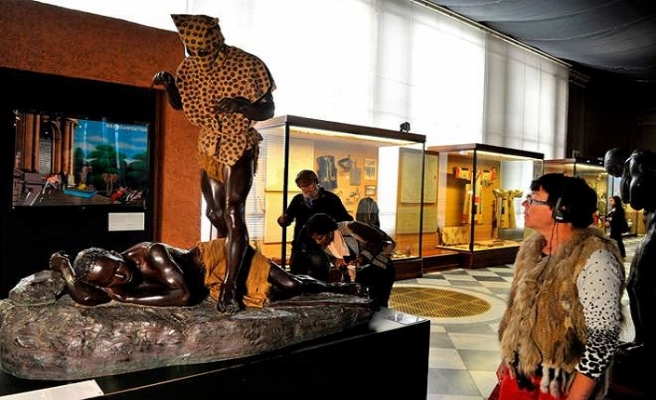Belgium’s Africa Museum will reopen to the public on 9 December after five years of renovations designed to modernize the museum from an exhibition of pro-colonial propaganda to one that is critical of Belgium’s imperialist past.
The museum, full of artefacts and stuffed wildlife, was often criticized for ignoring the brutalities of King Leopold II’s fiefdom, whose troops collected the hands of those who resisted slave labor at a time when millions of Congolese people are estimated to have died.
Many of the artefacts remain, but there is more commentary from African people on video screens, displays by Congolese artists, one including a 120-member family tree, in a bid to centralize Africans rather than Europeans.
Colonial history is now concentrated in one gallery, rather than dominating the whole museum, which also deals with current issues facing Democratic Republic of Congo (DRC) and its diaspora.
“We also assume our responsibility that for more than 60 years, we’ve diffused, we’ve disseminated an image of a superior, western way of thinking to African cultures,” said museum Director Guido Gryseels.
In the large rotunda, a statue remains of a European missionary with an African boy clutching his robes with a plaque that reads: “Belgium brings civilization to Congo”. But now the room is dominated by a giant wooden sculpture of an African man’s head, sculptured by an artist born in DRC.
Only one room is themed on colonial history, rather than dominating the whole museum.
But critics say that by keeping stolen artifacts, the museum still represents a continuation of colonialism.
“There is no decolonisation without restitution,” said DRC born Mireille-Tsheusi Robert, who now lives in Belgium – where she wrote a book on racism.
The museum, previously called the Museum of the Congo and the Royal Museum for Central Africa, said it would consider the DRC’s request.
Gryseels said the museum would consider DRC’s request and is open to returning some artifacts.
Source: Reuters
